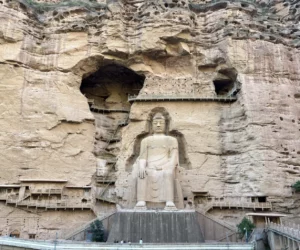The Bingling Temple Grottoes: A Marvel of Ancient Buddhist Art The Bingling Temple Grottoes are carved into a cliffside on the west of Dasigou in Jishishan Mountain. They are located in Taping Village, Wangtai Town, Yongjing County of Gansu Province, China. These grottoes are a remarkable treasure of ancient Buddhist art. A Historical Overview The…
Song Dynasty
The Song Dynasty, spanning from 960 to 1279 AD, marks a period of significant cultural and technological advancement in Chinese history. Founded by Emperor Taizu, after unifying the fragmented territories post the fall of the Tang Dynasty, the Song Dynasty is divided into two distinct periods: the Northern Song (960-1127 AD) and the Southern Song (1127-1279 AD). The division occurred due to the invasion by the Jurchen-led Jin Dynasty, forcing the Song court to flee southward, hence the nomenclature.
During its zenith, the Song Dynasty was renowned for its remarkable innovations, including the invention of gunpowder, the compass, and the advancement in printing technology. These innovations not only revolutionized Chinese society but also had a profound impact on the rest of the world. The period saw the flourishing of literature, philosophy, and the arts, with the landscape painting reaching new heights of aesthetic refinement.
The Song Dynasty was characterized by a complex bureaucracy and a meritocratic system, where civil service examinations played a crucial role in selecting government officials. This system allowed for a relatively high degree of social mobility and contributed to the stability and prosperity of the dynasty. The economy experienced significant growth, thanks to improved agricultural techniques, the expansion of trade networks, and the development of a thriving market economy.
Religion and philosophy during the Song Dynasty were marked by diversity and innovation. Confucianism saw a revival in the form of Neo-Confucianism, which integrated Buddhist and Daoist elements. Buddhism continued to play a significant role in the spiritual life of the people, while Daoism also maintained its influence. The period witnessed the compilation of the Daozang, a comprehensive collection of Daoist texts.
Social and daily life in the Song Dynasty varied significantly between the urban elite and the rural peasantry. The urban centers were vibrant with commercial activity, and the citizens enjoyed various forms of entertainment, including tea houses, restaurants, and public performances. The countryside, however, remained predominantly agricultural, with the majority of the population engaged in farming.
The Song Dynasty faced numerous military challenges, particularly from the northern nomadic tribes. The most significant threat came from the Mongols, under the leadership of Kublai Khan, who eventually conquered the Southern Song in 1279 AD, marking the end of the dynasty. The Song military, despite its advancements in military technology, struggled to defend against the Mongol cavalry.
The rulers of the Song Dynasty, especially during its early years, were noted for their efforts to promote the welfare of their subjects and to foster cultural achievements. Emperor Taizu and his successors, such as Emperor Renzong, were patrons of the arts and education, which contributed to the intellectual and cultural vibrancy of the era.
The Song Dynasty, with its rich cultural heritage, technological advancements, and significant contributions to Chinese civilization, remains a subject of fascination for historians and scholars. Its legacy is evident in the enduring influence on Chinese art, literature, philosophy, and governance.
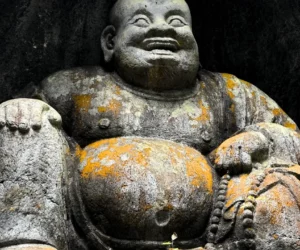
Fei Lai Feng Grottos Hangzhou
The Feilai Grottoes, also known as the Feilai Feng Caves, are a stunning collection of Chinese Buddhist art. Carved into the limestone cliffs of the Feilai Feng, or “the Peak that Flew Here,” these grottoes are located near the Lingyin Temple in Hangzhou, Zhejiang Province, China. They boast a rich array of statues and reliefs that date back to the 10th century during the Five Dynasties and Ten Kingdoms period. The grottoes are a testament to the skill and religious devotion of ancient Chinese artisans and have become a significant cultural and historical site.
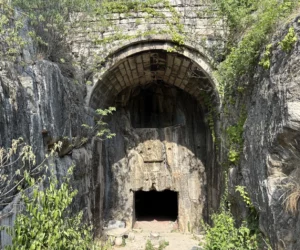
The Huan Tui Stone Chamber Tomb
The Huan Tui Stone Chamber Tomb: A Glimpse into Ancient Song Dynasty Located at the western foot of Huanshan Mountain in Dongshan Village, Maocun Town, Tongshan District, Xuzhou City, lies the Tomb of Huan Tui. This tomb, belonging to Sima Huan Tui of the State of Song during the Spring and Autumn Period, reflects the…
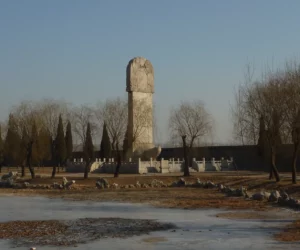
Jingling Palace Steles
The Jingling Palace Stele, located in Jiuxian Village, three kilometers east of Qufu City in Shandong Province, China, offers a window into the Song Dynasty’s rich history. This significant cultural relic stands as a testament to the historical reverence for Emperor Huangdi, whom Emperor Zhenzong of the Song Dynasty honored as the Zhao family’s ancestor….
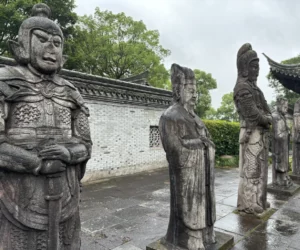
The Stone Sculpture Park of the Southern Song Dynasty
A Legacy in Stone: Southern Song Dynasty Sculptures The Southern Song Dynasty (1127-1279 AD) left a lasting legacy in China, particularly through its exquisite stone sculptures. Unlike the grand works adorning imperial tombs or Buddhist caves, these sculptures found a home in the tombs of prominent officials, primarily around Dongqian Lake. Today, they offer a…

Xiangtangshan Caves
Historical Significance of Xiangtangshan Caves Artisans first carved the Xiangtangshan Caves during the Northern Qi Dynasty, between AD 550 and 577. Subsequently, artists from the Sui, Tang, Song, and Ming dynasties also contributed to the caves’ development. These caves, located in Hebei province, stand out as the largest in the region. Craftsmen chose the top-quality…

